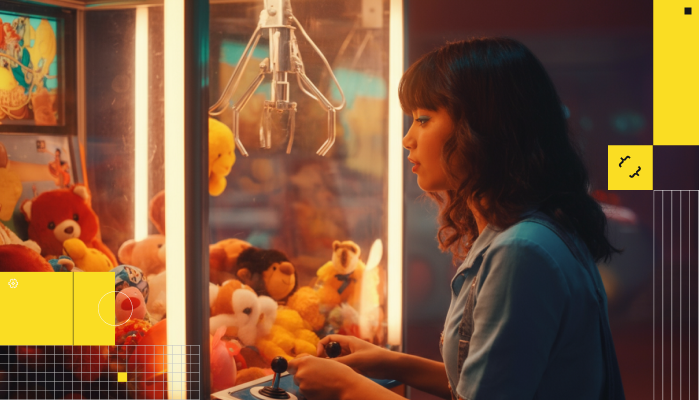Remember the good ol’ days when you would sit down with your family to watch the Friday night line-up? Everyone would huddle around the TV, glued with uninterrupted attention. There were no cellphones to live tweet Family Matters. No status updates to post during commercial breaks and no recommended programming because you weren’t binge-watching on Netflix. Sounds like the Dark Ages, right? Well it was, sort of. It was the pre-Internet boom, pre-social networking days when content consumption was fairly straight forward and Nielsen was the standard for measurement.
Fast-forward 20 years and content consumption is no longer so straight-forward. People are consuming content at a rapid clip, on various devices – often simultaneously – and are diversifying where and how they get their information. While it makes it more difficult to achieve a cohesive message across platforms – owned and secondary – it also casts a wider net and provides ample opportunity (and data) on where and how your customers are engaging online. A new era of content consumption has been ushered in and there are a new set of standards. Luckily for us, these spoils are our lessons.
Here are five ways that evolving online behaviors can and should inform your brand’s online content strategy and one way they shouldn’t.
1. Second Screen
If the late 60s was the ME generation, today is the MULTI-TASKING generation. We’re streaming video on our televisions while looking up recipes on our iPads and scrolling though Facebook on our cellphones. What does this mean for a brand that is trying to have a seamless conversation with its existing and potential customers? It means multifaceted and cohesive strategy that communicates your brand’s values in all of the places your customers are. Sounds good right? But when your customers are everywhere how do you know what message resonates at which point in the day and how do you incorporate our collective multitasking into a long-term strategy?
Behavior
According to Nielsen, 85% of tablet and smartphone users use their devices as a second screen weekly. 40% use them daily. Consumers are watching television, while also interacting online on their laptops, tablets and smartphones. Attention is spread across devices, meaning messaging and content needs to be targeted to the particular device. It also means it needs to be timed appropriately depending on where in the funnel a consumer is. Imagine that while they are watching their prime time television shows or streaming Hulu, they have seen a commercial from your brand and are possibly searching online for more information. Or they are streaming a documentary and go to YouTube to find more from the filmmaker. While this may create a disjointed experience and be challenging for brands to add to the conversation, it doesn’t have to be.
Engagement Tactics
- A great starting point is to discover your target audience through Persona Research and Audience Analysis and learning about their media consumption.
- What television shows are they watching? What streaming services? What apps and major websites are they visiting? What search engines are they using?
- This will tell you where and how your content can and should interact with the existing behaviors of your consumers. Knowing their initial hangouts will help you know what types of content to serve them in their second hangout.
2. IRT: In Real Time
Is the rise of Snapchat really that baffling? Society loves getting insider views of people’s lives – MTV Cribs anyone? And though the utility of Snapchat is not very debatable, it’s rise is astounding, nonetheless. The live viewing app, let’s you take videos and pictures and send them to followers who can view your content with a countdown and expiration. Other apps like Meerkat, Periscope and now Facebook Live are taking the real-time trend and turning it on its head. Brands can now broadcast and livestream directly to users. The appeal is that content is available instantaneously and in the case of Snapchat, available on a limited-time basis.
Behavior
Consumers are flocking to real-time apps. At the writing of this post, Snapchat has a user base of 100 million daily active users, 30% that fall into the millennial bucket. Snapchat has launched its brand partnerships and is a UGC machine. Consumers are looking for quick hits in entertaining formats and your brand needs to know how to meet them where they are congregating.
Engagement Tactic
- All content is not created equal. If articles, landing pages or social content isn’t meeting your needs or your engagement metrics, how about reassessing the format.
- Real-time content: videos, live-streams, quick hits on Snapchat or Vine may be a fresh addition to your content mix.
- While this type of content should not be the flagship of a robust content strategy, it can help diversify your performance. Keep in mind when adding new media content types that metrics are not one-size fits all and benchmarks should be tailored to the content type in question.
3. Personalization
Personalization is the crux of any sound content strategy. Tailoring content types and subject matter to the multiple sub-groups of your audience is key to ensuring that content is not only robust but resonates with its intended audience. However, simply matching the right content with the right consumer is not enough and the sheer amount of user data available today is making personalization and marketing automation much more sophisticated and frankly, overwhelming. Search has already moved to providing personalized information for users and is leveraging it to improve semantic understanding and machine learning.
Behavior
Users want personalized experiences. They want apps and search engines to know what they want before they tell them. If they are repeat customers or visitors, they want experiences that are tailored to their likes, dislikes, purchase history and preferences. The great piece of this is that with proper data capture and path analysis, you can know the steps and footprint of your customers. In the case of new visitors, we can look at commonalities in online behavior including landing pages, time on site, exit pages and conversions. Data is the science behind personalization and how you engage users once armed with the data is the art.
Engagement Tactics
- A/B testing various messages to signed-in versus new visitors is a great way to learn what personalized messages resonate.
- Create specific experiences based on past purchase or interaction behavior, providing a trustworthy and reliable brand experience for consumers.
- Chat services such as Slack and GroupMe, prompt users when they sign-in with nice messages such as “Fancy seeing you here” or “Long time no see.”
- With usage data and frequency metrics, brands can incorporate language that lets consumers know that they care about the interaction – and appreciate it no less.
4. Instant Messaging
Speaking of chat services, instant messaging has exploded as of late. eMarketer predicts that 49 percent of U.S. mobile phone users will use messaging apps, up from 30 percent in 2014. Instagram has launched its messaging feature, allowing users to communicate and send photos. And KiK has a whopping 275 million users, namely U.S. teens. So what does instant messaging usage have to do with content strategy?
Behavior
Users, many skewing younger, are adopting instant messaging apps and spending more time on the corresponding mobile apps. This speaks to two distinct behaviors – the need for instant communication and the need for it to be mobile-optimized. Also, as instant messaging is growing, it’s footprint is largely global. China’s WeChat has over 650 million users! Do we have your attention now?
Engagement Tactics
- Brands have already begun to play in this space, some in the natural areas of customer service, others in chatroom style gatherings. Brands can create water-cooler areas right where consumers are.
- Similar in style to Snapchat brand content, leveraging instant messaging apps can get your highly tailored content in front of captive audiences.
- Providing updates and exclusive information adds yet another highlight to your content roadmap.
- Also, because of its inherent mobile nature, content should be created for brevity and directly communicating your brand’s message.
5. Social Commerce
E-commerce is modus operandi. Amazon came in and changed the way the world purchases things – and they continue to innovate – and if your brand is not operating online you have larger problems than developing your content strategy. But in this online world, things rarely stay the same for long and social commerce is moving in. While it has not been widely adopted, numerous platforms including Facebook, Twitter and Pinterest have rolled out their own versions – buyable Pins, CTA on brand pages and buy now buttons in tweets.
Behavior
Social platforms are looking for more and more ways to monetize their audiences. Collaborating with brands, they are working toward developing wide adoption of this behavior – buying on social platforms – as opposed to capitalizing on an existing one.
While these are still new features, there are ways brands can gain insight into their consumers and their propensity to make social purchases, through content.
Engagement Tactics
- This is a great opportunity to test content across your brand’s social footprint. Adding CTAs and purchase-oriented content on your social channels can help you gauge your audience’s likelihood to purchase.
- Remember to keep all brand messaging consistent with your voice and tone guidelines as not to veer into hyper-promo territory.
- A key part of Content Strategy here at IPullRank is creating content that touches users throughout the funnel. Testing CTAs and adding consideration and purchase-driven content is a seamless way to test this.
Creating your brand’s content strategy – the roadmap to how your organization will create content that aids in your online goals – is a cohesive exercise that needs to take into account not only your existing customers’ habits but also online habits as a whole. We’re not in Kansas in anymore and interactions are as diverse as the platforms we engage with. Taking these 5 larger trends into consideration will help you shape a strategy that gets your brand’s content to a more seamless place as well as arms you with a tactical approach to make good on your strategy.
Bonus: 1 Habit You Shouldn’t Consider
In our varied and constantly changing online ecosystem, there are some habits that can be counter-productive to building a strong foundation for content. While we as strategists should always be looking for the next trends in online behavior, we should steer clear from trying to incorporate all things in our plans. Your content CAN NOT be all things to all consumers. With new apps being released every day and alarming statistics forecasting the end of networks every month, trying to chase anything other than actual data is like chasing a shooting star.
While these consumption trends can direct you in creating a base for content creation, they should be qualified with the data from your audience and married with the goals you have in mind for your brand and business.











